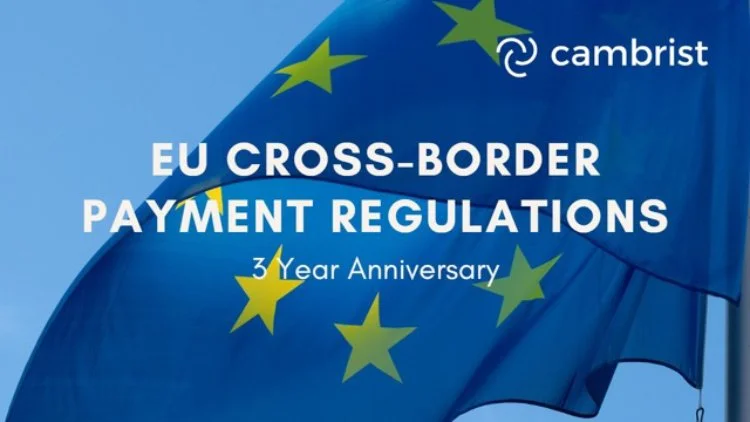EU Cross Border Payments Regulation (CBPR2): Three Year Anniversary
The card components of the CBPR2 regulations came into effect on the 19th April 2020, over three years ago. This significant regulation aimed to enhance transparency, reduce costs, and streamline payment processes. The CBPR2 Regulation was first introduced with the primary objective of facilitating efficient and cost-effective cross-border transactions within the EU. CBPR2 requires Issuers to provide greater transparency on the cost of cross-currency spend on cards. Under this regulation, all EU Issuers must display the cost of a cross-border card transaction as a % difference to the most recent ECB reference exchange rate for that currency pair. This calculation must include any related costs or charges and FX rate mark-ups. This information should be available to a customer in two forms:
First, before they make a transaction (via a publicly available forum such as a website) and
Secondly, immediately after a qualifying transaction (via an electronic message such as an SMS or an email).
Our research finds that compliance with this regulation continues to be inconsistent both between markets and within markets. In some countries, compliance is low with many Issuers offering either incomplete or inaccurate cost comparisons. In addition, we find that several Issuers are professing compliance by providing cardholders with the necessary cost components to calculate mark-ups by themselves. This is not consistent with either the spirit or requirements of the legislation.
The example below highlights the differences between a European Bank that is compliant and another that is non-compliant. The non-compliant example directs its customers to the relevant MasterCard and ECB websites for cardholders to calculate the currency conversion fees themselves. The compliant example below presents a “best-in-class” model of compliance as it presents both current and historical information on their currency conversion fees, along with providing the ECB rate.
Despite the inconsistent application of the regulation between different markets, the regulation has achieved one notable success in helping drive a key change in how both Visa & Mastercard set exchange rates. Prior to 2021, exchange rates for cross-currency transactions were only finalised at Settlement (typically 3-8 days after a transaction is authorised). This led to customers routinely having a different amount deducted from their account than was initially authorised (due to the differences in exchange rates).
The CBPR2 legislation made that practice problematic and prompted Visa & Mastercard to revise their exchange rate setting policy to fix the exchange rate at authorization for the majority of transactions. This change has significantly improved transparency in currency exchange calculations and improved the customer experience in international transactions, and is a source of competitive advantage for card issuers vs. merchant acquirers who promote DCC.
The CBPR2 regulations has had a significant impact on cross-border card payments since its introduction. That change is primarily related to the change in the exchange rate policies at Visa and Mastercard that has improved the customer experience. However, the lack of consistency in implementation of the regulation has impacted the ability of consumers to truly compare costs between different providers, thereby reducing the regulations effectiveness.


